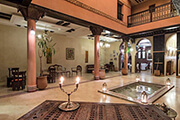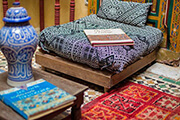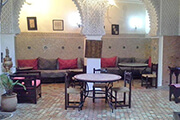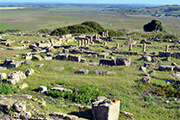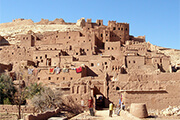Archaeological Site of Volubilis
 Panoramic view, residential quarter
Panoramic view, residential quarter
Humanity leaves its mezmerising traces whenever time allows it to. These traces become witnesses of the breathtaking movements of the nature surrounding it and of populations within and around it. Volubilis is no exception. From the Neolithic times till the fourteenth century, Volubilis held different civilizations and their constant evolution.
Strategic Location
The city of Volubilis is some thirty kilometers away from present day Meknes, and about three kilometers away from the sacred city of Moulay Idriss Zerhoun. Its name is believed to come from the ancient Amazigh language and to mean the Nerium Oleander that is abundant in the nearby rivers.
The territory was chosen for the fertility of its land and its abundance in natural resources. Later during the Roman annexation, its importance was in the strategic geographic position in the deffense of the Mauretania Tingitana, the African province of Rome bordered by the geographical triangle of Tingis (Tangiers), Sala (Chellah), and Volubilis.
 The Decumanus Maximus leading to the Tingis gate
The Decumanus Maximus leading to the Tingis gate
The first proofs of actual human occupation were in the third century before J. -C. The local populations were the ancient Amazighs commonly called Mauretanians. They lived and prospered under the influence of the Carthaginian culture of North Africa. They spoke their language, worshiped their gods and ran their city according to their rules. Today, the city bears traces of what survived of this culture, like lybic writing on steles and worship temples. A century later, Volubilis was already part of the African Kingdoms of North Africa and might have even been a city where the king lived. In fact, a bronze statue of Juba II (an African king and an ally of Rome, and future husband of Cleopatra Selene ; Cleopatra and Marc Anthony’s daughter) was found in Volubilis.
 The Decumanus Maximus
The Decumanus Maximus
Volubilis the Roman City
The city was officially declared an annex of Rome in the year 40 J. -C not without resistance from the people of Volubilis. When the African King Ptolemy, son of Juba II, was dramatically killed by the roman emperor Caligula. Although Europeans made up no more than 10% of the population, the city was declared a principe-y and saw a new urbanisation that fits the description of a true roman city. This is the city that the visitor sees and wanders in its magic today. Roman architects, planned and built five new quarters, an aqueduct, temples for Roman Gods, big houses, private and public bathhouses and an avenue, Decumanus Maximus, in the principal axis of the city with boutiques and porticos.
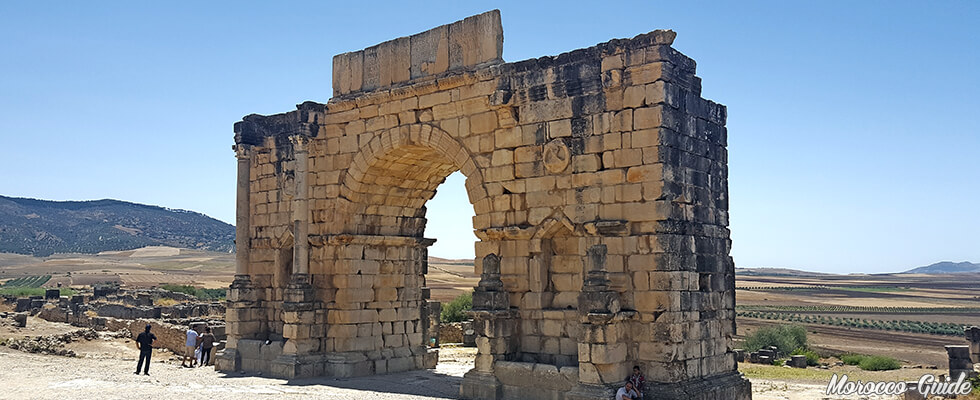 Arch of Triumph
Arch of Triumph
To understand the Roman city and the Roman life style of Volubilis Archaeologists since 1915 sporadically excavated the city. Today the visitor can view the findings in the Archaeological Museum of Rabat and the Center of Interpretation on the site of Volubilis itself. The results of these excavations delivered luxurious houses with mozaics of Gods, animals like lions and tigers, scenes of fishing, of driving chariots, of the eight works of Hercules…etc. This architecture and precious artwork were garded with a city wall protecting it from the nearby tribes. Much like today, outside of the city wall were farms that produced cereals and olives. In Volubilis, the artisanal quarters counts bakeries and many oil presses, and the visitor can visit a restitution of the olive pressing system on their way to the Forum and the restaured Arch of triumph.
The Romans left the city in the year 285 J. -C. to the Amazighs. It wasn’t until the eighth century that Volubilis saw a new civilization. But it wasn’t until the nineth century that Idriss I was received and chosen as leader of Oualili/Oualila (Volubilis in Arabic). Hence, Volubilis became the first Capital of Islamic Morocco. Idriss II was also appointed ruler in Oualili before the foundation of the holy city of Fes in 808.
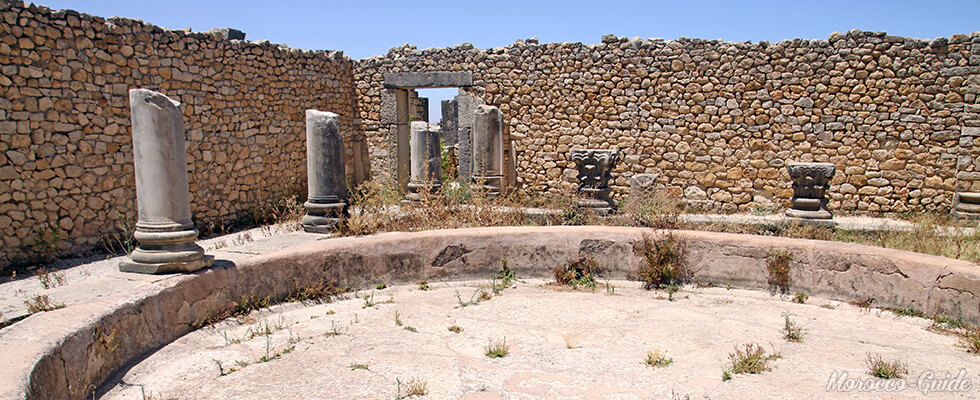 Detail picture of one of the Temples of Volubilis
Detail picture of one of the Temples of Volubilis
Volubilis Mosaics
Volubilis is famous for its well preserved/restaured mosaïcs. Divinity and fishing are two recurrent themes. Howerever, one of the most famous mosaïcs is the one representing the twelve heroic works of Hercules, son of Jupiter.
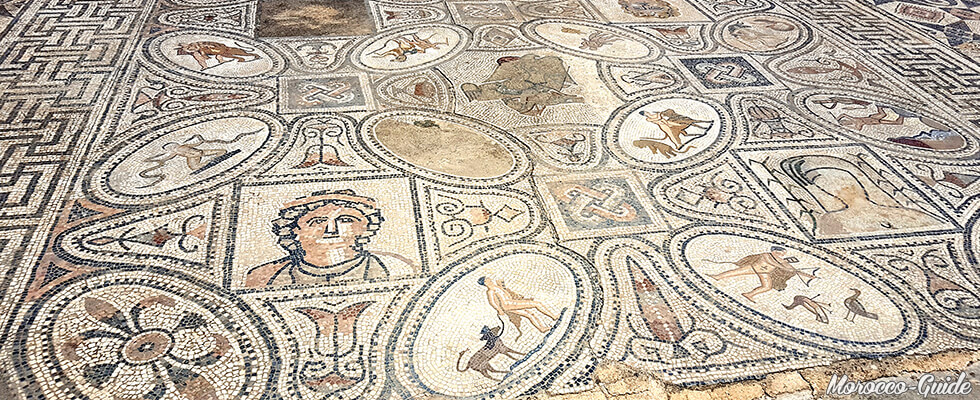 Mosaïcs representing the twelve Labors of Hercules
Mosaïcs representing the twelve Labors of Hercules
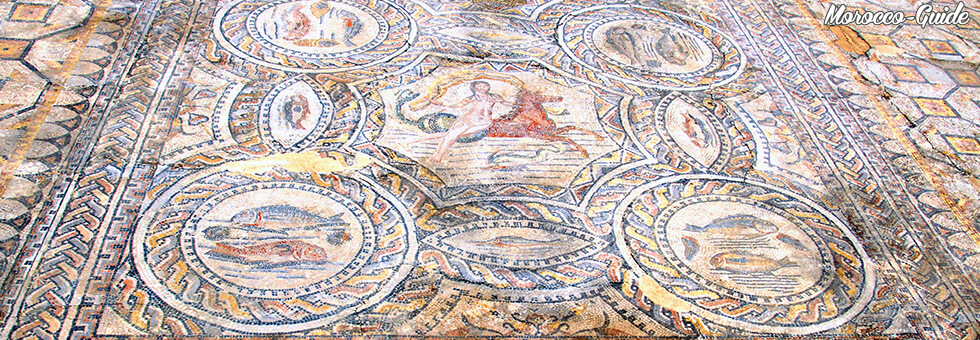 Mosaïcs representing the fishing and maritime theme
Mosaïcs representing the fishing and maritime theme
Volubilis stands today for the adoration of the tourist, the connoisseur,the global citizen, for the locals, and the elementary kids visiting the site. Each of the visitors are on a journey going through Volubilis for different reasons bearing different stories. Oualili, however, perpetually makes friends of its visitors and revenants of its admirers. It has always been subject to the cameras and stayed alive in the memories of its visitors from the roman chroniclers to the modern day vloggers.
Where to Stay in Meknes
Share your experiences with our community.
Recommended Reviews for Volubilis
Beautiful
7 years agoThis ancient Roman site is realy beautiful
Related articles : Ancient cities of Morocco
Advertisement
